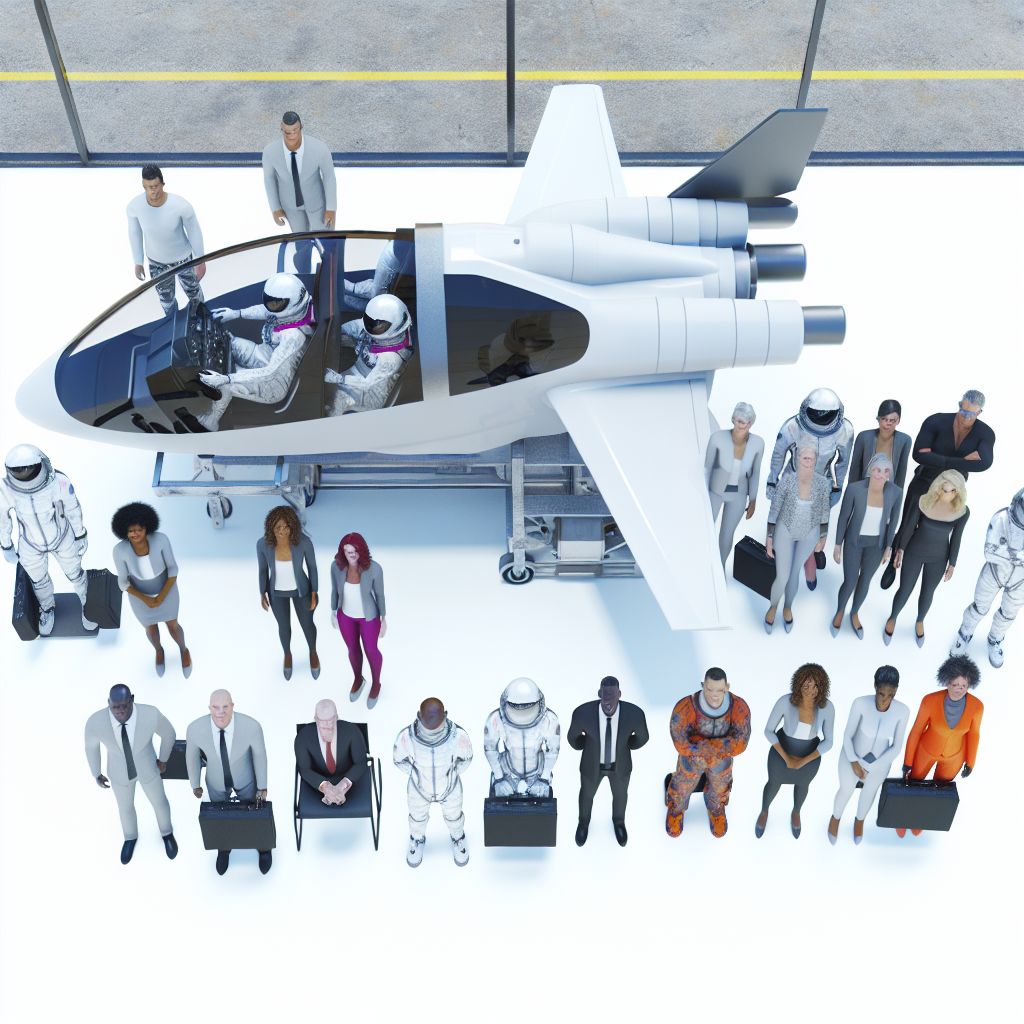Deutsch: Flugzeugentwurf / Español: Diseño de aeronaves / Português: Design de aeronaves / Français: Conception d'avions / Italiano: Progettazione di aerei
Aircraft design in the Space industry context refers to the process of designing aircraft that operate at the edge of or beyond Earth's Atmosphere, often termed as spaceplanes or aerospace vehicles. These vehicles are engineered to function both within the Earth's atmosphere and in outer space, necessitating a blend of aeronautical and astronautical design principles. This dual capability requires innovative solutions to challenges such as re-entry Heat, atmospheric Reentry, and transitioning between flight regimes (atmospheric flight and spaceflight).
Description

The design of such aircraft involves addressing unique Aerodynamic, thermal, and structural challenges not present in conventional aircraft design. Aerospace vehicles must withstand the extreme conditions of space, including Vacuum conditions, microgravity, and high Radiation levels, as well as the thermal and mechanical stresses of launching and re-entering the Earth's atmosphere. The design process includes considerations for Propulsion systems capable of operating in both air and space, heat shields for atmospheric re-entry, and life Support systems for crewed missions.
Application Areas
Aircraft design in the space industry has applications in several key areas, including:
- Suborbital Space Tourism: Vehicles designed for short-duration flights to the edge of space, offering passengers brief experiences of Weightlessness and views of Earth from the upper atmosphere.
- Orbital Transportation: Spaceplanes that can launch to Orbit, dock with space stations, and return to Earth, potentially offering more cost-effective and reusable alternatives to traditional Rocket launches.
- Rapid Global Travel: Hypersonic aircraft that utilize spaceflight technologies to achieve significantly reduced travel times across the globe.
Well-Known Examples
Notable examples of aircraft designed for space industry applications include:
- Space Shuttle: Although retired, the Space Shuttle was an iconic example of a reusable spacecraft that operated both in orbit and returned to Earth as a Glider.
- Virgin Galactic’s SpaceShipTwo: A suborbital spaceplane designed for space tourism, capable of carrying passengers to the edge of space.
- SpaceX's Starship: While primarily a spacecraft, Starship incorporates elements of aircraft design for its atmospheric entry and landing phases.
Treatment and Risks
Designing aircraft for the space industry involves addressing several risks and challenges:
- Thermal Protection: Ensuring the vehicle can withstand the extreme heat generated during high-speed re-entry into Earth's atmosphere.
- Structural Integrity: Designing a Structure that can survive the mechanical stresses of launch, spaceflight, and re-entry.
- Atmospheric Flight Performance: Balancing the design to perform well both in the dense atmosphere of Earth and in the vacuum of space.
Similar Terms or Synonyms
- Spaceplane design
- Aerospace vehicle design
- Integrated atmospheric and space flight vehicle design
Summary
Aircraft design in the space industry focuses on creating vehicles that can operate in both the Earth's atmosphere and outer space. This challenging field combines aeronautical and astronautical Engineering to develop innovative solutions for propulsion, thermal protection, and Life Support Systems. These designs enable new possibilities for space exploration, space tourism, and potentially revolutionize long-Distance travel on Earth.
--
Related Articles to the term 'Aircraft design' | |
| 'Re-entry' | ■■■■■■■ |
| In the space industry context, Re-entry refers to the process of a spacecraft returning to Earth's atmosphere . . . Read More | |
| 'Harsh Space Environment' | ■■■■■ |
| Harsh Space Environment in the space industry context refers to the extreme and unforgiving conditions . . . Read More | |
| 'Airplane crash' | ■■■■■ |
| Airplane crash: In the space industry context, an airplane crash can refer to accidents involving aircraft . . . Read More | |
| 'Structural Design' | ■■■■■ |
| Structural Design in the space industry refers to the engineering and design process that ensures spacecraft, . . . Read More | |
| 'Satellite deployment' | ■■■■■ |
| Satellite deployment in the space industry context refers to the process of placing a satellite into . . . Read More | |
| 'Testing' | ■■■■■ |
| Testing in the space industry context refers to the comprehensive and systematic processes conducted . . . Read More | |
| 'Spacecraft Re-entry' | ■■■■■ |
| Spacecraft Re-entry: Spacecraft re-entry refers to the phase in a space mission when a spacecraft returns . . . Read More | |
| 'Airspeed' | ■■■■■ |
| Airspeed in the space industry context generally refers to the speed of a spacecraft or Launch Vehicle . . . Read More | |
| 'Military aircraft' | ■■■■■ |
| Military aircraft in the space industry context refers to aircraft that are specifically designed, developed, . . . Read More | |
| 'Aeronautical engineering' | ■■■■ |
| Aeronautical engineering,: In the space industry context, aeronautical engineering often overlaps with . . . Read More | |
